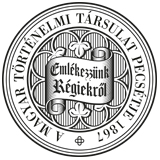Századok – 2008
TANULMÁNYOK - Neumann Tibor: II. Ulászló koronázása és első rendeletei. Egy ismeretlen országgyűlésről és koronázási dekrétumról II/315
második lehetett, és annak ellenére sem tekinthető koronázási dekrétumnak,111 hogy a király 1492-ben — másfél év háborúskodása után, immár a béke időszakában — ugyanezen intézkedések egy részét ismét dekrétumába foglalta. Szövege talán éppen ezért nem maradt korunkra: a választási feltételek, illetve az 1492. évi dekrétum — a következő évszázadokban is jól ismert — szövegei nagyrészt magukba foglalták rendelkezéseit. THE CORONATION AND FIRST ACTS OF KING WLADISLAW II (ON AN UNKNOWN GENERAL ASSEMBLY AND CORONATION DECREE) by Tibor Neumann (Summary) In September 1490 king Wladislaw II (1490-1516) spent almost two weeks at Székesfehárvár in order to have himself crowned in accordance with tradition. The author, describing the preparations of the ceremony with the help of contemporary sources, establishes the exact date of the coronation, which was neither 18 September, generally accepted so far, nor 21 September given by the contemporary Antonio Bonfini, but the 19th day of the same month; on the other hand, he tries to reconstruct the first acts of the new ruler on the basis of the available chatter evidence. The acts reconstructed from sparse evidence throughout the charters as well as a description of Bonfini prove beyond doubt that parallel to the coronation a general assembly was held at Székesfehérvár, at the end of which, before 1 October, the king confirmed the decrees accepted. They can be divided into four major groups: 1. confirmation of former legal documents securing noble privileges (such as the golden bull of Andrew II); 2. some of the articles of the decree issued by the royal council after the death of king Mathias (1458-1490), with of course modified deadlines (amnesty, obligation of returning estates unjustly occupied since the death of the king) - a decree whose existence was also proved by the present article; 3. the conditions of election consented to by Wladislaw in the so-called treaty of Farkashida on 31 July 1490 (among its articles the one concerning the preservation of the Holy Crown could be clearly identified, others partially reconstructed; 4. articles aimed at making the kingdom fit for a war on several fronts (division of the counties according to the prospective enemies, Germans, Poles or Turks, the obligation of equipping one mounted archer after each 20 peasant plots, convocation of another assembly for 22 May 1491. Although most of these acts were codified again in 1492, after the wars had ended, it could be proved that the great lawbook of 1492, which has been handed down to us by the Corpus Juris as the first decree of Wladislaw II, was in fact only the second, and cannot be regarded as a coronation decree. 111 Ezzel ellentétben, 1. Kubinyi A.: A királyi tanács i. m. 69. (Ő analógiának hozta azt, hogy Albert király is másfél évvel később adta ki koronázási dekrétumát).
